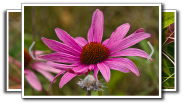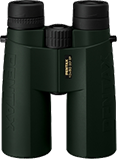black-legged long-horned beetle
(Euderces picipes)
Conservation • Description • Habitat • Ecology • Distribution • Taxonomy
|
|
||||||||||||||
Description |
Black-legged long-horned beetle is a fairly common, small, ant-like beetle. It occurs in the United States and southern Canada east of the Great Plains. Adults are active from May through July. They visit flowers and rest on foliage. The larvae feed on dead branches of hardwood trees, including black tupelo, chestnut, elm, flowering dogwood, hackberry, hickory, locust, maple, oak, pear, and redbud. Their feeding creates mines beneath the bark. Euderces are among the smallest longhorn beetles. Adult Euderces picipes are just 3 ⁄16″ to ⅜″ (5 to 9 mm) in length. The body is usually entirely black. The eyes are rather small. They are very deeply notched into two separate lobes around the antennae bases. The small upper lobe is connected to the large lower lobe by a narrow line. The antennae are threadlike, usually medium brown, and long. On the male they almost reach the tips of the wing covers (elytra). On the female they are shorter, reaching to the rear third of the elytra. They have 11 segments. The second segment is very short. The third segment is the longest, almost twice as long as the fourth. The upper plate on the first segment of the thorax (pronotum) is longer than wide. The sides are rounded, and it is narrowed at the rear. The surface is shiny, distinctly longitudinally grooved, and moderately covered with long, erect, pale hairs. The plate between the elytra bases (scutellum) is rounded, and it is covered with short, very fine, pale hairs. The elytra are almost 2½ times as long as their width in the shoulder (humeral) area. The sides are slightly concave toward the middle and the tips are broadly rounded. Near the base of each elytron there is a moderately strong bulge near the inner margin. At about two fifths the distance from the base of each elytron there is a narrow, white or ivory colored, slightly raised, somewhat oblique ridge. The ridge extends from the lateral margin slightly forward toward but not reaching the inner margin. There is often an indistinct line of pale hairs across the rear quarter. The surface of the elytra is coarsely pitted (punctate) across the middle third, less pitted on the front third, and not at all pitted on the rear third. On each leg the third segment (femur) is abruptly inflated toward the end. The basal third of the elytra and the legs are usually entirely black in northern populations, sometimes reddish brown in the south. |
Size |
Total length: 3 ⁄16″ to ⅜″ (5 to 9 mm) |
Similar Species |
Habitat and Hosts |
Dead wood of hardwoods, including black tupelo, chestnut, elm, flowering dogwood, hackberry, hickory, locust, maple, oak, pear, and redbud. |
Ecology |
Season |
May through July |
Behavior |
|
Life Cycle |
|
Larva Food |
|
Adult Food |
|
Distribution |
||
|
Sources Giesbert, E. F., and J. A. Chemsak. 1997. A review of the genus Euderces LeConte (Coleoptera: Cerambycidae; Tillomorphini). Proceedings of the California Academy of Sciences 49: 211-286. |
|
| 5/4/2025 | ||
Occurrence |
||
Fairly common |
||
Taxonomy |
|
Order |
Coleoptera (Beetles) |
Suborder |
Polyphaga (Water, Rove, Scarab, Long-horned, Leaf, and Snout Beetles) |
Infraorder |
Cucujiformia |
Superfamily |
Chrysomeloidea (longhorn beetles and allies) |
Family |
Cerambycidae (longhorn beetles) |
Subfamily |
Cerambycinae (round-necked longhorn beetles) |
Tribe |
Tillomorphini |
Genus |
Euderces |
Subordinate Taxa |
|
|
|
Synonyms |
|
Callidium picipes Clytus picipes Euderces picipes ssp. occidentalis Euderces picipes ssp. picipes |
|
Common Names |
|
black-legged long-horned beetle |
|
Glossary
Elytra
The hardened or leathery forewings of beetles used to protect the fragile hindwings, which are used for flying. Singular: elytron.
Femur
On insects and arachnids, the third, largest, most robust segment of the leg, coming immediately before the tibia. On humans, the thigh bone.
Pronotum
The exoskeletal plate on the upper side of the first segment of the thorax of an insect.
Scutellum
The exoskeletal plate covering the rearward (posterior) part of the middle segment of the thorax in some insects. In Coleoptera, Hemiptera, and Homoptera, the dorsal, often triangular plate behind the pronotum and between the bases of the front wings. In Diptera, the exoskeletal plate between the abdomen and the thorax.
visitor Photos |
||
Share your photo of this insect. |
||
This button not working for you? |
||
Alfredo Colon |
||
 |
 |
|
 |
 |
|
 |
 |
|
MinnesotaSeasons.com Photos |
||
|
||
|
||

Slideshows |
|

visitor videos |
||
Share your video of this insect. |
||
This button not working for you? |
||
|
Other videos |
||
Euderces picipes ANTLIKE LONGHORN BEETLE on Thistle 9081112 |
About
Jul 15, 2024 Euderces picipes ANTLIKE LONGHORN BEETLE on Thistle. Subsequently an Amush bug grabbed the beetle. |

visitor Sightings |
||
Report a sighting of this insect. |
||
This button not working for you? |
||
Alfredo Colon |
Location: Albany, NY |
 |
Alfredo Colon |
Location: Albany, NY |
 |
Alfredo Colon |
Location: Albany, NY |
 |
MinnesotaSeasons.com Sightings |
||
|

|
Created: 5/4/2025 Last Updated: © MinnesotaSeasons.com. All rights reserved. |
